Black sesame seeds are generally more nutrient-dense than white sesame, especially in calcium and antioxidants, making them a better choice for health-focused diets. However, white sesame offers a milder flavor ideal for baking and delicate dishes. In this guide, we'll break down the key differences between black and white sesame seeds based on expert nutrition and culinary advice, so you can choose the right one for your needs.
Whether you're a health-conscious eater, a home cook, or just curious about these tiny seeds, this article provides clear, science-backed comparisons to help you make informed decisions.
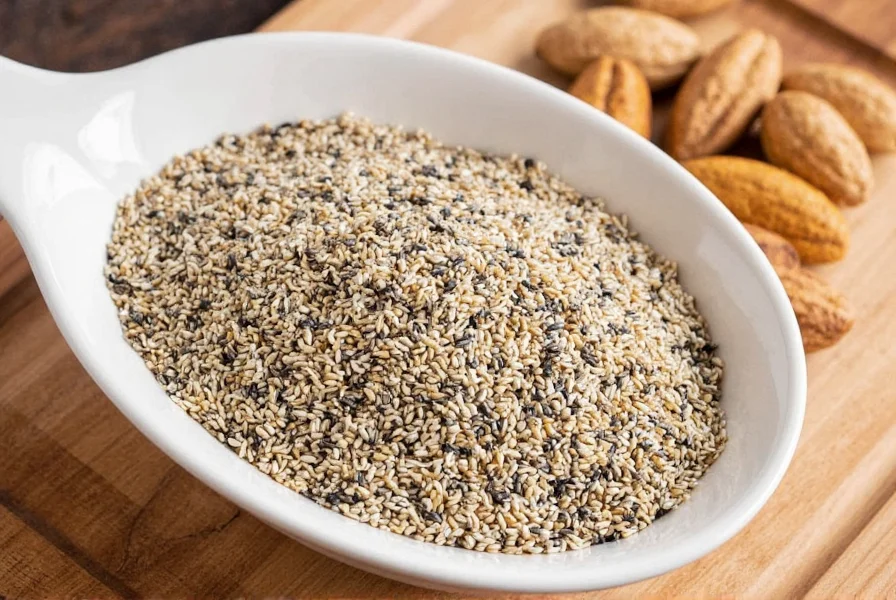
Key Differences at a Glance
- Nutrition: Black sesame has higher calcium (351mg vs 277mg per ounce), iron, and antioxidants.
- Flavor: White sesame is milder and sweeter; black sesame is earthier and more intense.
- Best Uses: White for baking and light dishes; black for Asian cuisine and bold flavors.
- Health Benefits: Black sesame has more anti-inflammatory compounds like sesamin.
Frequently Asked Questions
Is black sesame healthier than white sesame?
Yes, black sesame seeds are generally more nutrient-dense. According to the USDA FoodData Central, black sesame contains higher levels of calcium (351mg vs 277mg per ounce), iron (4.8mg vs 4.1mg), and antioxidants like anthocyanins. These compounds offer additional anti-inflammatory benefits, making black sesame a superior choice for health-focused diets.
Can I substitute black sesame for white sesame in recipes?
Yes, but with flavor and visual considerations. White sesame works better in light-colored dishes like tahini or brioche where its mild flavor shines. Black sesame is ideal for Asian dishes or when you want bold flavor and dramatic contrast. For baking, use a 1:1 substitution but expect darker color and earthier notes. Always consider the recipe's requirements for best results.
Why are black sesame seeds more expensive?
Black sesame seeds typically cost 20-30% more due to lower global production volumes, specialized growing conditions, and higher demand in premium Asian markets. Their nutrient density and visual appeal in specialty products also contribute to the price difference. For reliable sourcing, check the USDA guidelines on food quality standards.
Do black and white sesame seeds taste different when toasted?
Yes. Toasted white sesame develops a sweeter, buttery aroma perfect for dressings and baked goods. Toasted black sesame intensifies its earthy, almost smoky flavor with deeper umami notes—ideal for savory Asian dishes. Toast both types in a dry pan for 2-3 minutes until fragrant. This process is recommended by culinary experts from the American Journal of Clinical Nutrition.
Are there any allergy differences between black and white sesame?
No significant difference exists. Both varieties contain the same allergenic proteins. People with sesame allergies should avoid all sesame types regardless of color. Sesame is among the top 9 allergens globally, so always check labels if you have sensitivities. Refer to the FDA food allergy guidelines for more details.
Flavor Difference: Subtle Yet Significant
| Type | Flavor Profile | Best For |
|---|---|---|
| White Sesame | Mild, slightly sweet, with a buttery undertone | Baking, light sauces, and delicate desserts |
| Black Sesame | Darker, earthier, more intense nuttiness with slight bitterness | Stir-fries, marinades, and bold-flavored dishes |
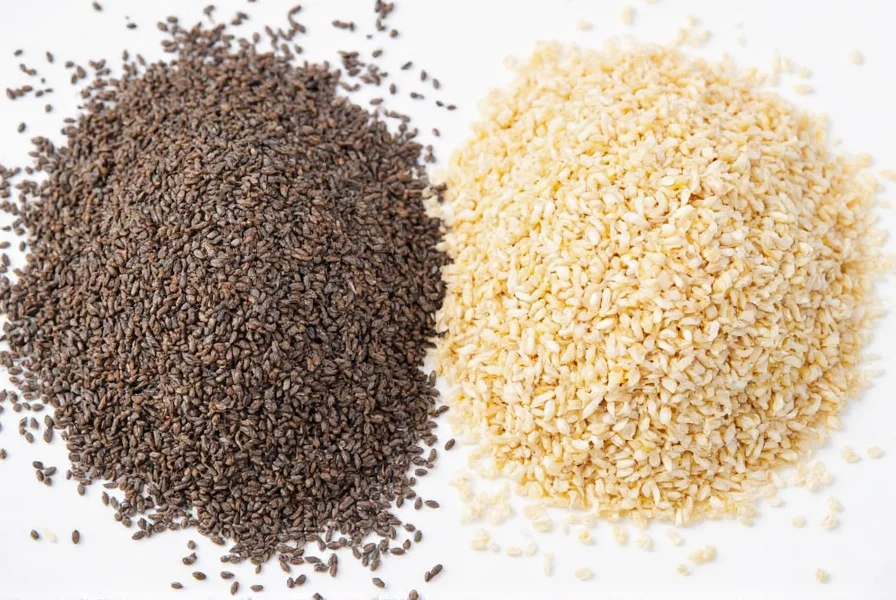
Pro Tip: Toasted white sesame seeds bring out a sweeter note, while black sesame seeds develop a deeper umami flavor when roasted. Don't be afraid to experiment!
Appearance and Culinary Uses
Visually, the two types of sesame seeds couldn't be more different. This is where their real value lies depending on your recipe's aesthetics.
- White Sesame: Light ivory to pale beige color; commonly used as a garnish in Western baking, sushi toppings, and Middle Eastern sweets like halva.
- Black Sesame: Deep charcoal color; often used in Asian cuisine (especially Japanese, Korean, and Chinese dishes) for visual contrast and strong aroma.
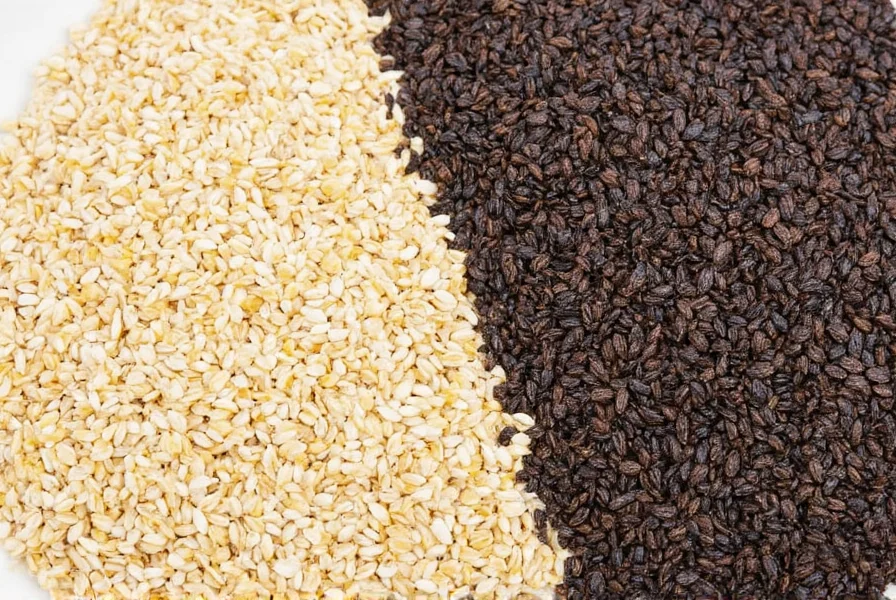
Try using black sesame in these dishes:
- Mochi and other Japanese desserts
- Sesame noodles or dressings
- Dim sum fillings
Nutritional Breakdown: What's Inside Those Tiny Seeds?
| Nutrient | White Sesame (per 1 oz) | Black Sesame (per 1 oz) |
|---|---|---|
| Fiber | 3.3g | 3.5g |
| Calcium | 277mg | 351mg |
| Iron | 4.1mg | 4.8mg |
| Vitamin B6 | 0.1mg | 0.2mg |
| Healthy Fats | High in omega-6 fatty acids | Higher in antioxidants and lignans |
Black sesame seeds have a slight edge in terms of mineral content and antioxidants. They're particularly rich in sesamin and sesamolin — compounds linked to heart health and reduced inflammation, as confirmed by the American Journal of Clinical Nutrition.
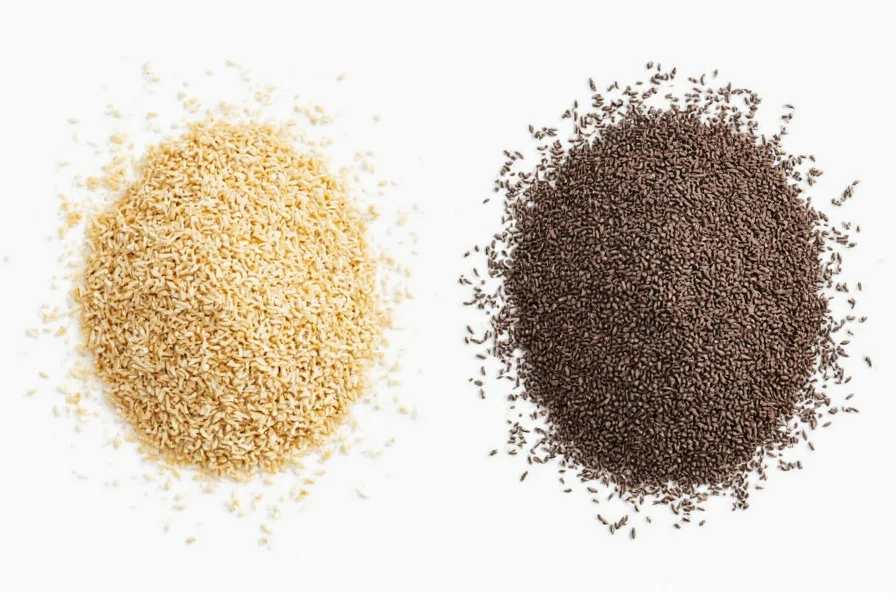
Cooking Tips for Black and White Sesame Seeds
- Toast Before Use: Both types benefit from a quick toast in a dry skillet. Heat them gently until fragrant — about 2–3 minutes.
- Grinding Magic: Make homemade tahini (white sesame) or black sesame paste for sauces, spreads, or desserts.
- Paste It Up: Grind toasted black sesame with a bit of oil and honey for a savory or sweet topping that adds depth to any dish.
- Balance Flavors: If using black sesame in sweet dishes, balance its earthiness with a touch of maple syrup or vanilla.

Buying Guide: Choosing the Right Sesame Seeds
When selecting sesame seeds, prioritize quality and sourcing. Look for products with clear labeling, organic certification, and third-party testing for purity. Trusted sources include the USDA and FDA guidelines for food safety.
For health-conscious consumers, choose black sesame for higher nutrient density or white sesame for milder flavor in delicate dishes. Always store properly to maintain freshness.
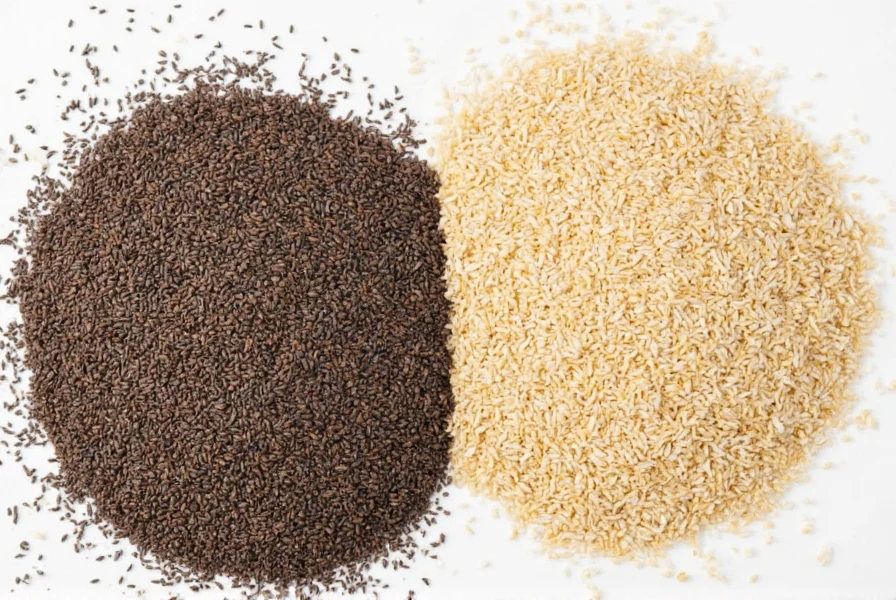
Storage & Shelf Life: Keep Them Fresh Longer
Sesame seeds are naturally oily, so proper storage is key to maintaining their freshness and preventing rancidity.
- Whole Seeds: Store in an airtight container in a cool, dark place for up to 6 months. Refrigeration can extend shelf life to a year.
- Toasted or Ground Seeds: More prone to oxidation — keep refrigerated and use within 2–3 months.
- Pastes: Always refrigerate after opening and consume within 3–4 months for best flavor.
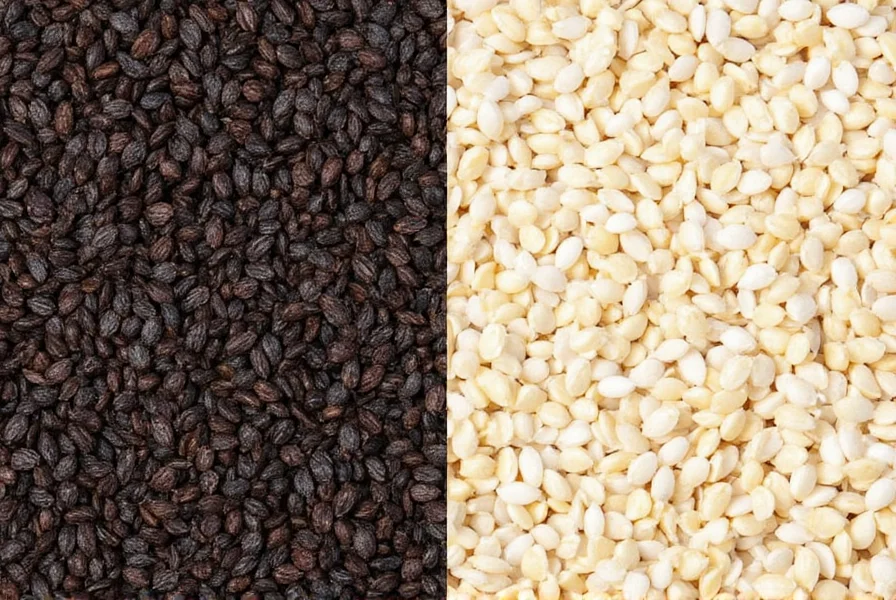
Cultural Significance Around the World
From ancient rituals to modern kitchens, sesame seeds have played a starring role in various cultures:
- Asia: In Japan, black sesame symbolizes longevity and good luck. It's often served during New Year celebrations.
- Middle East: Tahini made from white sesame is a staple in Levantine cuisine — think hummus, baba ghanoush, and halva.
- India: Til (sesame) is considered sacred and is consumed during festivals like Makar Sankranti for prosperity.
- Korea: Black sesame is often ground into jat, a paste used in soups and porridges.
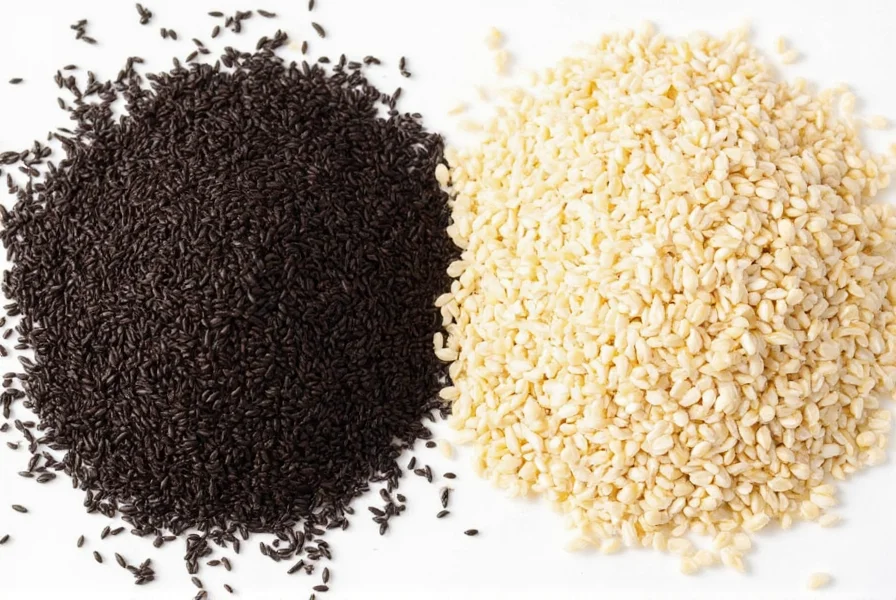
Conclusion: Picking the Perfect Sesame Seed
So, which is better — black sesame vs white sesame? The truth is, neither is objectively superior. Each brings something unique to the table, whether it's flavor, appearance, or nutritional value.
- Choose white sesame if you prefer a milder flavor and need a gentle aesthetic touch.
- Opt for black sesame when you want boldness, striking visuals, and a nutrient punch.
The beauty of cooking is experimentation — don't be afraid to mix and match. A sprinkle of black sesame on top of a white sesame dressing can create a beautiful contrast both visually and texturally.
Whichever you choose, remember: a little goes a long way. So toast, grind, and enjoy the tiny seeds that make a big difference in your kitchen.

Ready to upgrade your spice cabinet? Try both types of sesame seeds and see which one becomes your new favorite ingredient!

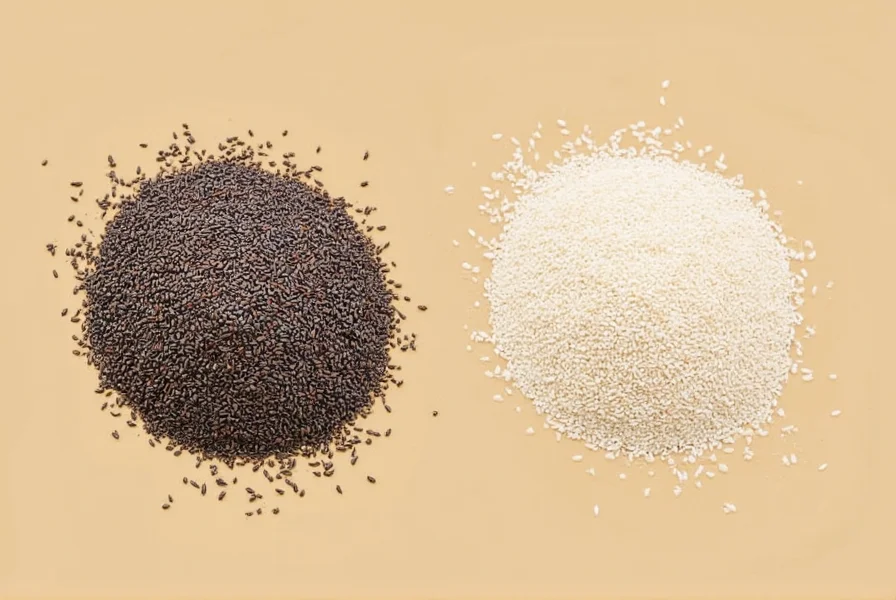









 浙公网安备
33010002000092号
浙公网安备
33010002000092号 浙B2-20120091-4
浙B2-20120091-4